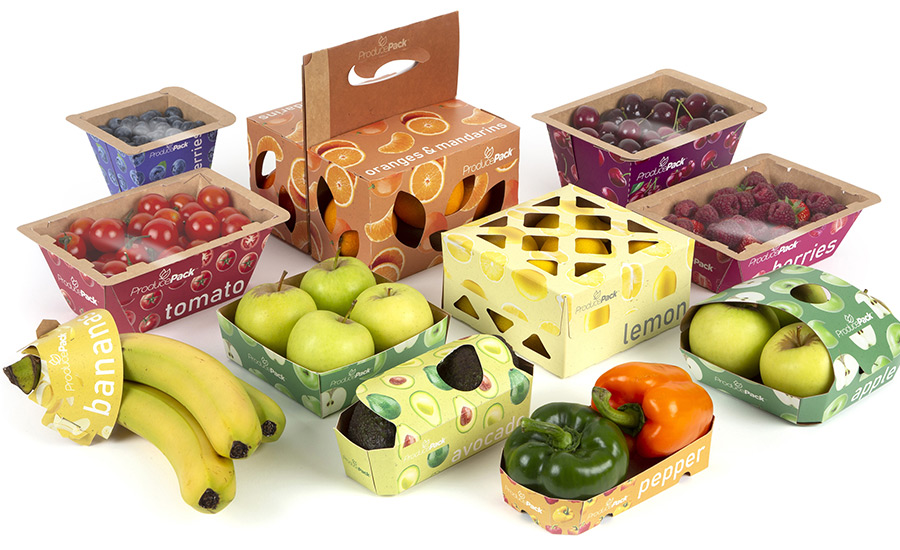5 Types of Produce Packaging to Keep Your Products Fresh
Produce packaging plays a vital role in preserving the quality, freshness, and shelf life of fruits and vegetables. With the growing demand for convenience and sustainability in the food industry, packaging has become more than just a protective covering – it’s a crucial element in ensuring that products reach consumers in optimal condition. In this article, we will explore five types of packaging that are specifically designed to keep produce fresh, while maintaining their appearance, nutritional value, and overall quality.
1. Modified Atmosphere Packaging (MAP)
Modified Atmosphere Packaging (MAP) is a technology that alters the composition of gases within the packaging to extend the shelf life of fresh produce. This technique involves reducing the amount of oxygen inside the package and increasing the concentration of carbon dioxide and nitrogen. By adjusting these levels, the ripening process slows down, which helps prevent spoilage and extends freshness.
How It Works:
- The packaging material is sealed to create a controlled atmosphere.
- Special materials are used to regulate gas exchange, preventing oxygen from reaching the produce and reducing the growth of spoilage-causing microorganisms.
5 Types of Produce Packaging to Keep Your Products Fresh
MAP is widely used for berries, lettuce, tomatoes, and other fresh fruits and vegetables that are sensitive to oxygen exposure. It’s a highly effective solution to reduce waste and increase the shelf life of perishable items.
2. Biodegradable Packaging
As sustainability becomes a top priority in the food industry, biodegradable packaging has gained significant traction. Biodegradable materials are designed to break down naturally over time, reducing their environmental impact compared to traditional plastic packaging. This type of packaging is made from organic materials like plant starch, cellulose, or other compostable substances.
Benefits:
- Eco-Friendly: Biodegradable packaging is compostable, making it a great alternative to plastic that can take centuries to decompose.
- Preserves Freshness: Many biodegradable packaging options are designed to be breathable, preventing moisture build-up while still allowing airflow to maintain freshness.
Fruits like apples, citrus, and grapes, as well as vegetables such as mushrooms, benefit from biodegradable options because they allow for adequate ventilation and moisture control, extending shelf life.
3. Shrink Wrap and Stretch Film
Shrink wrap and stretch film are commonly used in the packaging of fresh produce for several reasons, including ease of use, cost-effectiveness, and the ability to extend freshness. These materials are tightly wrapped around produce or clusters of produce to create a sealed environment that helps prevent moisture loss and contamination.
How It Works:
- Shrink wrap is heated to shrink tightly around the produce, creating a snug fit that helps preserve freshness.
- Stretch film is a thin plastic film that is wrapped around produce in a way that can stretch to fit snugly, offering similar benefits to shrink wrap but with slightly less rigidity.
Shrink wrap and stretch film are particularly useful for packaging individual pieces of produce, such as cucumbers, melons, or peppers. The tight seal prevents bruising, reduces moisture loss, and shields the produce from external contaminants.
4. Clamshell Packaging
Clamshell packaging, often made from transparent plastic or recyclable materials, is widely used for fruits like berries, grapes, and tomatoes. This packaging type features a hinged design, allowing it to open and close like a shell, offering easy access to the product inside. The clear material provides visibility, allowing consumers to see the freshness of the produce before purchasing.
Key Advantages:
- Protection Against Damage: The sturdy structure of clamshell packaging reduces the risk of produce being bruised or crushed during transportation and handling.
- Ventilation: Many clamshell containers are designed with small ventilation holes that allow for air circulation, preventing moisture buildup and keeping the produce fresh longer.
Though clamshell packaging is not always biodegradable, some companies are developing recyclable versions, making them a more sustainable choice compared to traditional plastic alternatives.
5. Wax Coatings
Wax coatings are a natural solution used to preserve the freshness of produce, especially for fruits like apples, cucumbers, and citrus. A thin layer of edible wax is applied to the surface of the fruit, which creates a protective barrier against moisture loss and oxidation. This method also helps to maintain the produce’s appearance by preventing dehydration and reducing shriveling.
How It Works:
- The wax coating is applied to the surface of the fruit to create a shiny, smooth finish.
- It slows down the rate of water evaporation and provides a barrier to airborne pathogens, thus prolonging freshness.
Wax coatings are particularly popular for apples, as they enhance the fruit’s natural shine and help it maintain its crisp texture over extended periods. While the use of wax coatings is generally considered safe, there is a growing trend toward using plant-based or organic waxes to cater to consumers who prefer more natural and environmentally friendly options.
5 Types of Produce Packaging to Keep Your Products Fresh
The right packaging can make all the difference when it comes to preserving the freshness of produce. From Modified Atmosphere Packaging (MAP) that slows down the ripening process, to biodegradable and sustainable alternatives that cater to eco-conscious consumers, the options for keeping produce fresh are more diverse than ever. Whether you’re looking to extend shelf life, minimize food waste, or reduce your environmental impact, these five types of produce packaging offer practical and effective solutions for the modern food industry. As technology and sustainability continue to evolve, we can expect even more innovations in produce packaging to help keep our food fresher for longer while minimizing environmental harm.

